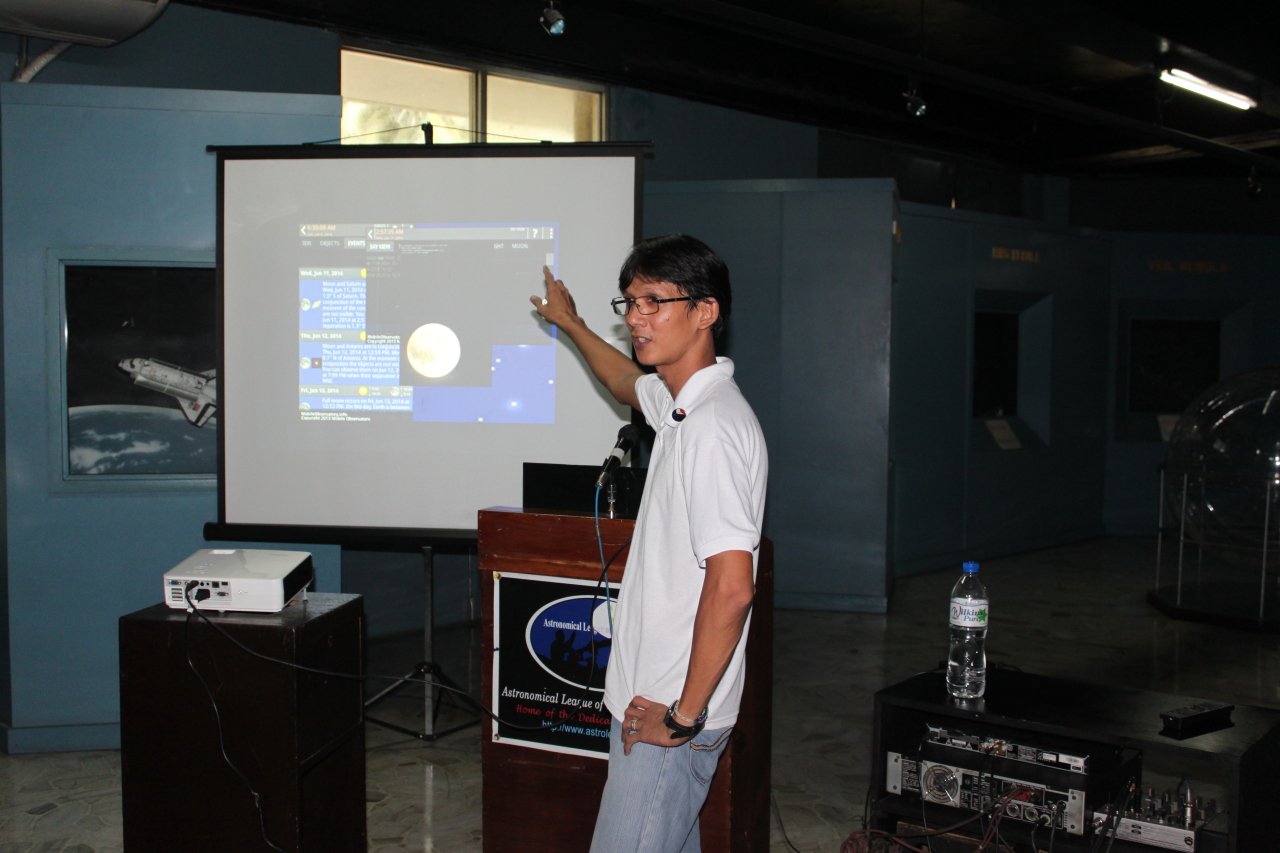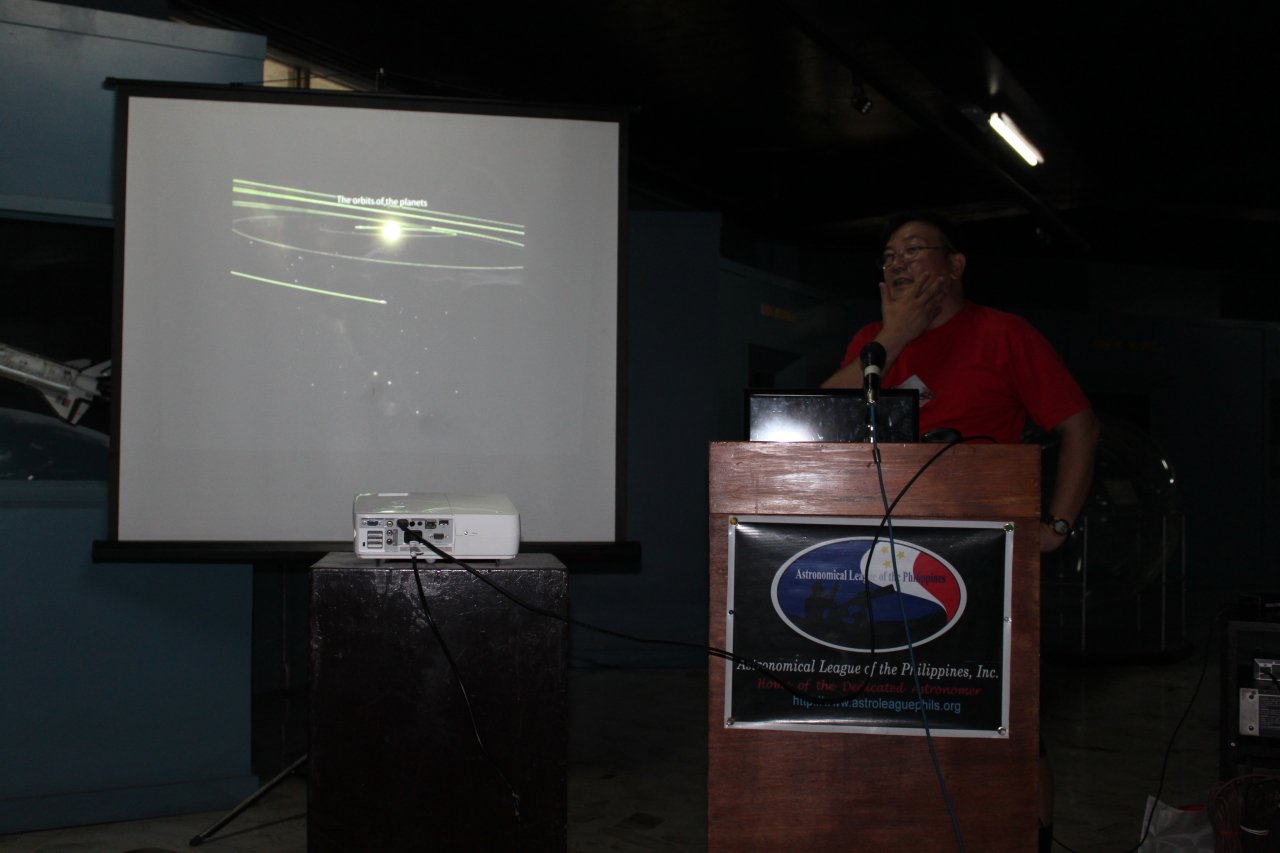June 8, 2014 ALP Monthly
Meeting Report
by James
Kevin Ty & Christopher Louie Lu
Last June 8 ,
members of the Astronomical League of the
 Philippines
(ALP) held their monthly meeting at Manila
Planetarium. Members who attended were ALP
President James Kevin Ty ,Secretary Christopher
Louie Lu , Auditor Edgar Ang, directors Mike Enage &
John Ray Cabrera ; Edge Lat, Marlon Monzon, Mark
Vornhusen & wife Arlene ; Vincent Gella, Dodi Maralit,
Norman Marigza and newest member Nico Enriquez. Philippines
(ALP) held their monthly meeting at Manila
Planetarium. Members who attended were ALP
President James Kevin Ty ,Secretary Christopher
Louie Lu , Auditor Edgar Ang, directors Mike Enage &
John Ray Cabrera ; Edge Lat, Marlon Monzon, Mark
Vornhusen & wife Arlene ; Vincent Gella, Dodi Maralit,
Norman Marigza and newest member Nico Enriquez.
Meeting started at
around 3:00pm with ALP Secretary Christopher Louie
Lu presenting an interesting lecture on Kepler-186f.
Discovered by the Kepler Space Telescope using the
transit method along with 4 other additional planets
orbiting closer to its parent star. It took 3
years of data analysis to confirm its discovery.
Initially presented as KIC (Kepler Input Catalog)
8120608 & KOI (Kepler Object of Interest) 571 on March
19, 2014. Full public announcement is made on April 17,
2014. This is the first Earth-size planet found orbiting
in the Habitable zone of its parent star.
5 Things You
Should Know About Kepler-186f
1.) Discovery
of Kepler-186f is a historic find:
Though
astronomers have found other exoplanets orbiting inside
its habitable zone, this is the first time they found a
Earth-sized planet orbiting its stars habitable zone.
2.) Life
could thrive on its surface:
Though
Kepler-186f is
“Earth-sized”
it may not be
“Earth-like”.
However, since it orbits well inside the stars habitable
zone its possible that this exoplanet has the
atmospheric characteristics to support liquid water on
its surface. An essential ingredient for life as we know
it.
3.)
Kepler-186f is a multi-planet system:
Like
our own solar system, Kepler-186 harbors 4 other
planets. These four planets are roughly 1.5 times the
size of the Earth but it orbits closer to its parent
star. Making these other planets hotter & thus cant
support life.
4.)
Kepler-186f is Earth's
“cousin”
not its “twin”:
Kepler-186f has certain characteristics & properties
that are similar with Earth but without further
observation, data gathering & analysis, the only
similarity we have with Kepler-186f is merely our size.
To be able to call an exoplanet
“Earths
twin”,
it should orbit around a sun-like star, has an
oxygen-based atmosphere, has an abundant amount of
liquid water on its surface, has life & ultimately
intelligent life.
SETI
(Search for ExtraTerrestrial Intelligence) as part of
its search for intelligent life & using the Allen
Telescope Array, had listened for radio emissions from
Kepler-186 system for about a month. So far, no signals
has attributable to extraterrestial technology were
found.
5.) Its star
is cooler than our Sun:
With just
half the mass of our Sun, Kepler-186 is considered as a
“Red-dwarf”
star. If Kepler-186f were revolving our Sun its orbit
would be within the orbit of the planet Mercury, a
planet considered uninhabitable. But because the star is
a smaller red-dwarf, Kepler-186f sits comfortably in its
habitable zone.

ALP Secretary Christopher Louie Lu presenting an
interesting lecture on Kepler-186f. |

ALP president James Kevin Ty discuss ALP's participation on
the upcoming June 22, 2014 International SunDay. |
Afterwards, ALP
president James Kevin Ty discuss ALP's participation on
the upcoming June 22, 2014 International SunDay which
more than 100+ astro organizations around the world will
simultaneously setup solar telescopes to provide the
public a free public viewing of our closest star, the
Sun in white light as well as Ha wavelength.
Lastly, the video
on the demotion of Pluto was shown to the members so
that they can fully understand why Pluto was demoted to
dwarf planet status.
Meeting ended at
around 6:00pm.
|